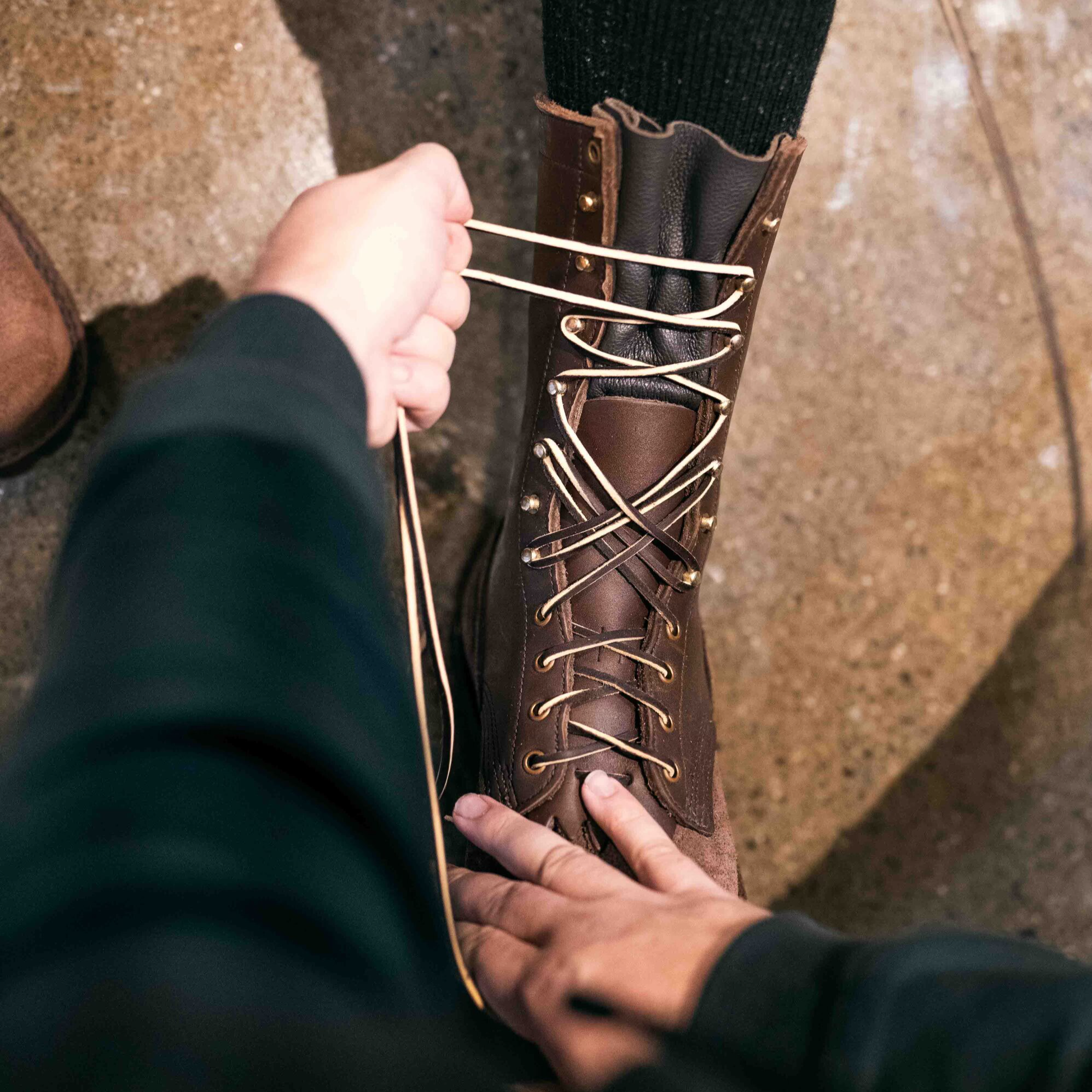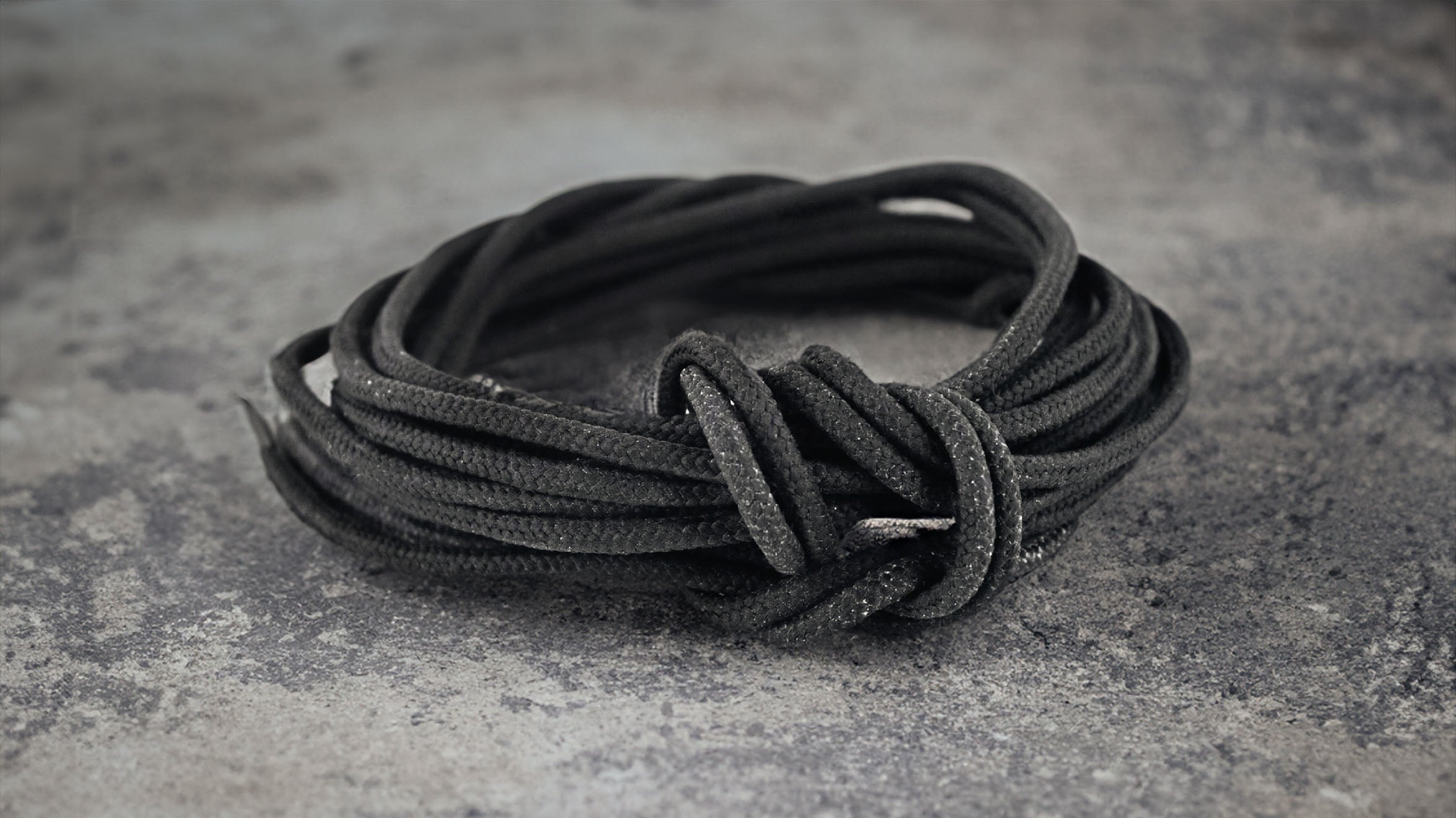Will Work Boots Stretch? If So, How Much?
Work boots will stretch a little as you break them in as the leather softens and molds to your foot. You can speed up the process using a leather conditioner or boot stretching spray, making your boots easier to wear.
Leather is incredibly versatile, but it can only stretch so far. You’ll not get a leather work boot to stretch more than one size, and that’s an optimistic hope—realistically, you'll not stretch a boot more than a half size bigger.
If your work boots still feel like they’re pinching, even after months of breaking them in, you may need to go up a half size.

Do Work Boots Stretch?
Leather is one of the most pliable materials you can use to make work boots—it’s flexible, breathes well, and is strong enough to protect your feet for years. It’s also one of the only materials that will stretch without being permanently damaged.
Having said that, if you’ve bought boots that are a size too small, even using a boot stretcher won’t fix the problem. New boots, especially quality boots made of premium leather, feel stiff and inflexible until broken in.
If your boots are rubbing your feet or a little tight in areas, then you can speed up the breaking-in process by using Obenauf’s Leather Oil to condition and soften the leather. Wearing your conditioned boots at home, with thick socks on, will stretch out your boots so they feel more comfortable.
If your boots are so tight your toes are curling inside your toe cap, no conditioning oil will fix the fact that you’ve bought the wrong size. Here at JK Boots, we know how vital the correct size is, as our YouTube guide on Finding Your Size shows. With the perfect fit, you shouldn’t need to stretch your boots more than a few millimeters.
How Much Do Work Boots Stretch?
If your boots are over a half size too small, you’ll struggle to make an impact regardless of your stretching method. A boot stretcher is an incredible tool to have, but it’s not a miracle worker—sometimes, the wrong size is just the wrong size.
You can’t stretch the sole of your boot, only the upper leather. Too much stretching can damage the fibers in the leather, essentially tearing your boots apart, so at most, you’ll stretch around a half size.
The thickness and quality of the leather upper will affect how tough it is to stretch your boots. A cheap pair of boots made with thin, low-quality leather might be easier to stretch, but the leather won’t cope with too much stretching.
We’ve always ensured the JK Boot range is made of only the best materials in the US, and our boots, such as the awesome JK Boots O.T Redwood, are crafted from 8-9oz premium oil-tanned leather.
Stretching thick leather takes time, care, and effort, but softening the leather first with a conditioning oil will allow you to safely stretch your boots out enough to prevent rubbing. We try to ensure you’ve picked the right size boots because we know the right fit will last for years.
Stretching Work Boots With a High Shaft
If you’ve bought work boots that provide shaft height to increase stability and ankle protection, you might find the shaft of the boot feels too snug in some areas.
The shaft of your work boots can also be stretched out using Obenauf’s Leather Oil to soften the leather, allowing you to stretch your boots slightly. Again, there’s only so much you can stretch your work boot, and if the boots are the wrong size, stretching them will only help up to a point.
Using conditioning oil alongside a boot stretcher that has a shaft stretcher will stretch out the shaft of your work boot, though you’ll have to stretch your boots in stages. Little and often is the key, as you aim to expand the boot without damaging it.
If you manage to over-stretch your boots, there’s little you can do about it, so it’s essential to keep checking to ensure you’re not rendering your boots useless.

Buy The Perfect Size
It’s no secret that leather work boots can be stretched, but without the right size boots, you’ll struggle to get more than a half size from stretching them. Whether you’re buying off-the-shelf boots or a pair of custom-built JK Boots O.T - Brown work boots, it’s vital to get the sizing right.
New boots often feel tight until the leather becomes molded to the shape of your feet, so you only need to condition your boots and wear them with thick socks for a few days before they feel fantastic.
If you’re walking around in agony, with your toes feeling like they’re folding under your feet, no amount of stretching will fix the problem. Before buying any boots, have your feet measured so you know the length and width you need, and you’ll never have to return that custom-built pair of JK Boots you’ve been eagerly awaiting.
We’re always focused on your boots being perfect in every way because we know how important it is that your boots perform in some of the harshest conditions, and that all starts with your boots being the correct size.
FAQs
Are work boots supposed to be tight at first?
New work boots, especially those crafted from thick, premium leather, can often feel tight when wearing them. The leather needs time to wear in, becoming more flexible and comfortable. If your boots are tight enough that they’re uncomfortable, you’ll need to use leather conditioning oil to soften and condition the leather, making them more flexible.
Is it better for boots to be tight or loose?
Tight boots are uncomfortable, and you should aim for snug boots with less than a centimeter of gap between your heel and the back of your boots. Tight boots can rub and make working extremely painful. Loose boots can cause sprains or accidents. Aim for snug-fitting boots that let your feet breathe.
How Tight Should Steel Toe Boots Fit?
When you're picking out new steel toe boots, it's important to remember that they fit a bit differently than your normal shoes. Since these boots have a tough cap to protect your feet, they won't stretch in the toe area like regular footwear might.











Leave a comment